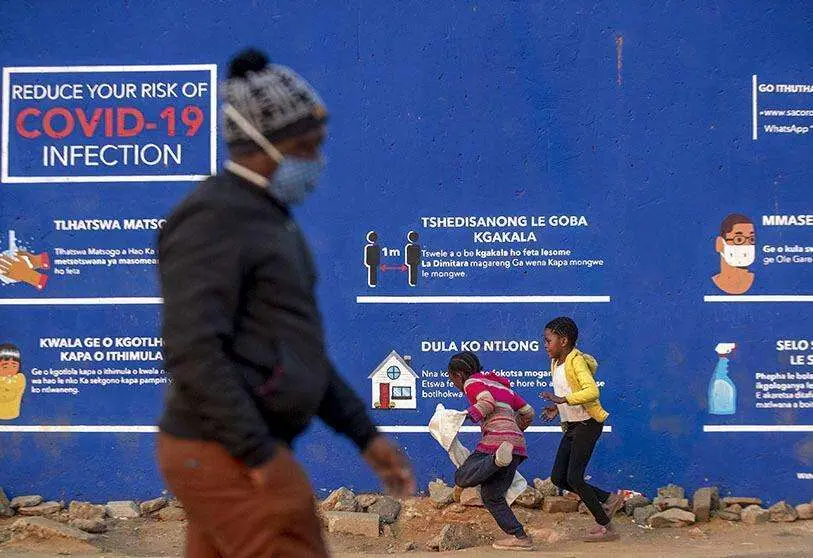The other pandemic

Perhaps because Marshall McLuhan was not entirely wrong when he said that the medium is the message, we have become engrossed in focusing our attention on the effects of COVID in the West while ignoring the consequences that the pandemic is having and will have on the more populous and less prosperous countries, which account for almost half of the world's population.
Precisely because of this information bias in the media we consume - overwhelmingly in the hands of Western companies - at the onset of the pandemic there was no shortage of voices that, with no little self-righteousness, framed the health crisis as a kind of retribution by Mother Nature against the excesses of globalism. However, the absurdity of this story, a mixture of biblical plagues and armchair paganism against human development, has quickly become evident, since little more than a year after the disease's debut, none of the richest countries is among the top ten in per capita deaths due to COVID, precisely because the level of development they have achieved has enabled them to contain the pandemic through mass vaccination and sophisticated public health systems, so that there is no longer any industrialised country whose leading cause of death is COVID. As Thomas Hobbes said, life in a state of nature is miserable, short and brutal.
The same cannot be said of the rest of the world. While the spectrum of incidence in developing countries is as wide as it is disparate, there is certainly a direct correlation between the degree of economic development and the capacity to cope with the pandemic. At the extreme end of the spectrum, countries such as Ethiopia, Nigeria, South Sudan, North Sudan, the Democratic Republic of Congo, Vietnam and Zambia have barely vaccinated between 0.1% and 0.9% of their populations, while at the other extreme, countries such as the Philippines, India, Malaysia, Indonesia, Argentina, Colombia and Pakistan have only managed to inoculate five percent of their populations.
If, even before the endemic, these countries were already mired in serious economic problems and great difficulties in accessing global financial markets, which has led to high levels of youth unemployment in India, Iran, Tunisia and Turkey, soaring to 55% in South Africa, their tumultuous situation highlights the end of the growth trajectory of most African countries, the epitome of which was Nigeria's complete repayment of its foreign debt before the end of the first decade of this century. This incipient African growth, which failed or could not be harnessed to reduce the economic weight of extractive industries, has come to an abrupt halt in the last year, effectively increasing its critical dependence on mineral exports, mainly to China, which is also the main recipient of the debt repayments that many African countries incurred before the pandemic. The truth is that despite promises of global vaccination through the international COVAX programme, 90% of African countries will not reach their vaccination targets.
Things are no better in Latin America, where COVID mortality rates are now eight times higher than the global average, disrupting the economy to the point where, according to UN data, poverty rates have risen by nearly 50 million people, with the number of cases of extreme poverty and child malnutrition in Mexico particularly harrowing, while in others, such as Colombia, the crisis has led to a general rise in violent crime, exacerbated by falling remittance incomes from migrant workers. The very industrial structures of underdeveloped economies are themselves a factor in preventing effective health measures. Thus, while in the West it has been possible to maintain a certain degree of economic activity through teleworking, in the vast majority of developing countries a substantial part of their domestic product comes from the informal economy, based on precarious, face-to-face jobs where it is impossible to avoid personal contact. The figures speak for themselves: the weight of this sector in these countries ranges from 60% of the workforce in Egypt to 80% of the workforce in India. It is simply a pipe dream to expect that in places like Manila, Baghdad or Mumbai there is a choice between confinement and going out to make a living every day, from sunrise to sunset. As it is, the developed West has two choices: remain complacent, indulging in the narcissism of those who vaccinate more and better, and dazzled by the ostentation of those who have become even richer thanks to the pandemic, or take serious action to help developing countries defuse a ticking time bomb whose explosion will put hundreds of millions of people in a choice between putting themselves in China's hands or setting off on an unprecedented exodus.

